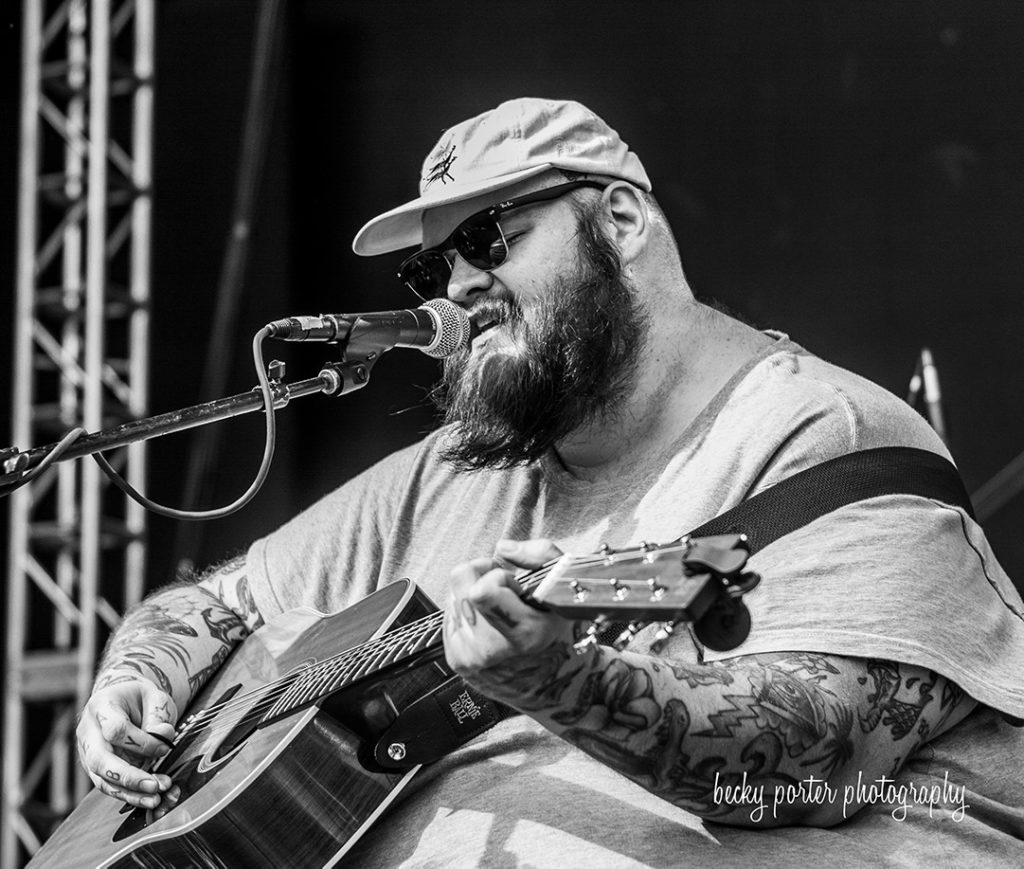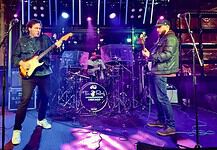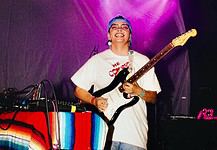Last Updated on August 9, 2022, 9:37 PM | Published: August 9, 2022
If you’ll indulge me a moment of brief, personal background:
A long time ago, maybe 12 or 13 years back, I had just recently landed my first professional writing gig rambling about music news and recent national releases for a small community magazine in Norman and, to my surprise, they wanted me to go check out a young, local singer and to interview him.
I’d never been invited to meet or chat with a local artist before. I was excited, to put it mildly, and I expected that it could be a big step toward becoming the kind of respected, finger-on-the-pulse arts and music reporter that I wanted to be.
What I hadn’t expected was how much fun I would have just sitting and chatting about music, influences, families, even video games. It was a blast, and was so easy to just talk.
That’s because the little-known, upstart local singer that I was sent to chat with was a kid named John Calvin (he hadn’t started using the “Abney” professionally yet,) and his unyielding energy and music-is-the-key-to-life attitude were infectious. We talked for hours over pizza.
Then came years of honing his songwriting, of finding his voice, of pairing up with Tulsa breakout star John Moreland and touring the world, of major late-night talk show performances, of opening for heroes and legends.
Abney is no longer the energetic kid I met over a decade ago. He’s become a fixture of the Okie folk and indie scenes, and has begun tackling much bigger questions of figuring out just who he is, what he’s trying to say, and how he wants to say it.
On his newest album, “Tourist” (his fourth full-length album in five years,) he may have finally found the answers.

“Tourist” is clearly and openly inspired by Abney’s years of travels and tours, possibly as an intentional turnaround from the quarantine rumination of 2020’s “Familiar Ground,” but it’s not a concept record recounting specific names or places. Rather, it’s an attempt at capturing the spirit and the wandering air of travel, of unfamiliar scenery and nights alone in a strange place.
It’s difficult to call the songs here “folk,” actually. They’re mostly built on soft acoustic guitars and pianos, yes, but the “folk” designation often tends to denote storytelling of a certain kind, and these really aren’t story songs. These are sketches or journal entries. There’s no narrative, just a collection of character studies about the man that Abney has grown to become by passing through these various states, both American and psychological.
Most immediately striking is the sudden ease and smoothness in Abney’s vocals.
Even up through “Familiar Ground,” there has always been a youthful affectation of rasp and drama in his singing style, but even from the first lines of “Tourist” opener “Full Moon Friend,” there’s a confident restraint in his breathy, double-tracked voice that’s honestly difficult to not compare to Elliott Smith.
It takes a certain level of trust in your own work to not push it too heavily or sell it too hard, and this album feels like the clearest example yet of Abney’s increasing trust in his songwriting and delivery.
It’s difficult to say how much of that can be credited to Moreland’s influence and friendship, but it stands to reason that it’s played a major role in helping Abney to find the same kind of quiet confidence and easy honesty that has helped to make Moreland a sensation.
Moreland also helped to produce the album and is the only other credited musician on the record, splitting instrument duties with Abney seemingly right down the middle, making “Tourist” as much a document of their deep friendship and collaboration as an emotional retrospective of their travels together.

Musically, Abney cites everything from The War on Drugs to classic Elton John as influences for these songs, and it’s admittedly easy to hear parallels with John’s incomparable mid-70’s “southern” period. He was an Englishman yearning for Americana just as Abney is an Okie longing for English solitude. They were bound to meet in the middle.
Much more than folk, than indie-rock, than acoustic-pop, the songs on “Tourist” fall best among that classic 1970s singer/songwriter heyday, alongside the likes of Carly Simon, Cat Stevens, and perhaps more than any other, James Taylor. These songs are nothing as vapid or watery as “easy-listening,” but they are undeniably easy. There’s a lightness and almost a weightlessness that suits Abney’s voice and wanderlust energies better than probably ever before in his career.

So yes, I admit that there’s a likely bias in my focus on this record as a representation of Abney’s growth and evolving maturity as an artist and a songwriter. In my own mind, he still began as that irrepressibly energetic kid chatting about Bob Dylan and PC gaming over some pizza slices all those years ago, and that image will always be there for me.
But if the songs on “Tourist” represent a lonely, longing journey, then it’s one of years just as much as miles, and if these floating little musical Polaroids can develop a new image in my mind of Abney as a full-formed adult troubadour, far removed from that starry-eyed college kid, then I think it’s easy to call it a rousing success.
“Tourist” by John Calvin Abney is available now from Black Mesa Records on all streaming services and at johncalvinabney.bandcamp.com.
For news, tour dates, merch, and more, visit johncalvinabney.com.
Brett Fieldcamp has been covering arts, entertainment, news, housing, and culture in Oklahoma for nearly 15 years, writing for several local and state publications. He’s also a musician and songwriter and holds a certification as Specialist of Spirits from The Society of Wine Educators.











